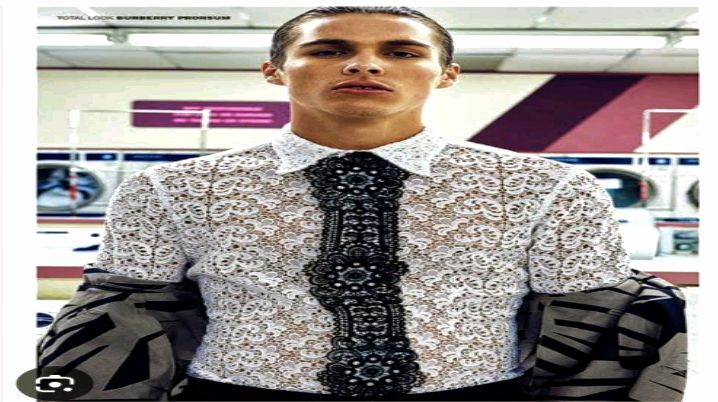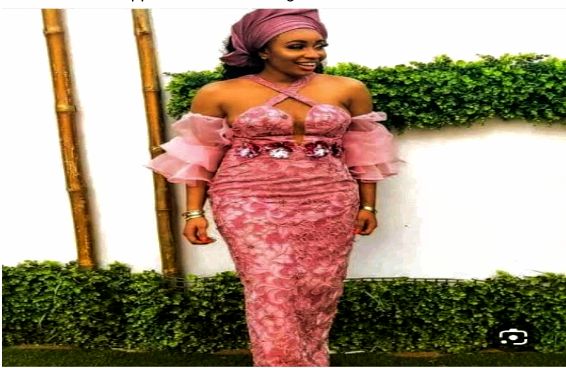Precilia Luckydandy

Lace fabric was introduced to Yoruba land during the colonial era, particularly in the late 19th century and early 20th century.
European traders and missionaries brought lace fabric to Nigeria, including the Yoruba region, as part of the global trade in textiles and clothing materials.
The introduction of lace to Yoruba land coincided with the period when European colonial powers had significant influence in trade and cultural exchanges across Africa. Initially perceived as a symbol of Western fashion and status, lace gradually became integrated into Yoruba traditional attire, particularly for special occasions and ceremonies.
Over time, Yoruba people integrated lace fabric into their traditional attire, adapting it to fit their cultural norms and aesthetic preferences. It became particularly popular among Yoruba women for special occasions like weddings, birthdays, and ceremonies.
In Yoruba culture, lace fabric is often associated with status, wealth, and elegance. The intricate designs and delicate texture of lace symbolize sophistication and are highly valued in social gatherings and celebrations.
Lace has evolved within Yoruba traditional attire to include various styles and colors. It is commonly used for making Buba (blouse) and Iro (wrapper), which are worn by women, and Agbada or Danshiki for men, often paired with Aso Oke (hand-woven fabric).
Lace fabric is versatile and can be styled in various ways depending on personal preference, occasion, and cultural context.
Here are different ways to style lace:
1. Dresses and Gowns: Lace dresses and gowns are classic choices for formal events such as weddings, parties, and evening occasions. Lace dresses can be styled with different accessories to makes the dressing shines. Lace can be styled into different gowns that can be rock for occasion and for casual dress.
2. Blouses and Tops: Lace blouses or tops can be paired with skirts, trousers, or even denim jeans for a more casual yet elegant look. This dress can be rock for everything occasion and for casual dress or foe work.
3. Skirts: A lace skirt can be styled with a simple blouse or top. It’s suitable for both casual outings and more formal settings depending on the length and style of the skirt.
4. Outerwear: Lace can be incorporated into outerwear such as jackets, blazers, or even kimono-style cover-ups. This adds texture and a unique flair to your outfit while keeping it stylish.
5. Accessories: Lace can be made into accessories to style with your outing, Lace accessories such as scarves, shawls, or headbands can complement your outfit without overpowering it. They make the dressing shine more and add a more beauty to it.

There are more ways in which Lace can be styled to make your dressing beautiful for example, mixed fabrics, Layering, Casual chic, Mixed pattern, etc.
Lace can certainly be incorporated into everyday attire, although how it’s styled and the context in which it’s worn can vary.
Overall, while lace is often associated with formal or special occasions, with thoughtful styling and choice of pieces, it can be seamlessly integrated into everyday attire.
It adds a touch of sophistication and femininity to casual outfits, allowing you to express your personal style in a subtle yet elegant manner.
Overall, lace attire promotes elegance, cultural heritage, individuality, and a sense of luxury, making it a versatile and enduring element in fashion that continues to captivate and inspire.
Lace attire can promote indigenous artistry in several meaningful ways. Many indigenous cultures have intricate lace-making techniques that have been passed down through generations.
By incorporating lace attire into modern fashion, indigenous artistry is preserved and celebrated, ensuring that traditional craftsmanship continues to thrive, it often reflect cultural motifs and symbols specific to indigenous communities.
Indigenous lace-making often involves local artisans who specialize in traditional techniques. By promoting lace attire, consumers can support these artisans economically, helping to sustain their livelihoods and preserve their skills.
Lace attire remains trendy and popular in modern fashion, Lace has a timeless quality that transcends trends. Its delicate and intricate patterns evoke a sense of elegance and sophistication that appeals to a wide range of tastes.

Lace can be incorporated into various styles and garments, from dresses and blouses to skirts and accessories, versatility allows lace attire to be suitable for different occasions, from formal events to casual outings.
Lace is often associated with femininity due to its soft textures and intricate designs. It adds a romantic and graceful touch to outfits, making it a popular choice among individuals who appreciate feminine fashion.
Lace attire frequently appears on runways and is worn by celebrities, influencing mainstream fashion trends. Designers often incorporate lace into their collections, ensuring its continued presence in the fashion industry.
Civilized fashion designers and brands continually reinterpret lace with modern twists, such as combining it with bold colors, contrasting fabrics, or edgy silhouettes. This keeps lace attire relevant and appealing to current fashion preferences.
Lace remains a favored choice for bridal and special occasion wear. Its association with romance and elegance makes it a natural fit for weddings, parties, and other for events.
While fashion trends evolve over time, lace attire maintains its allure and continues to be embraced by fashion enthusiasts and designers alike for its beauty, versatility, and timeless elegance.
In conclusion, lace offers a wide range of styling possibilities, from formal occasions to casual outings and cultural attire. It adds elegance, texture, and femininity to outfits, making it a versatile choice for fashion-forward individuals.
